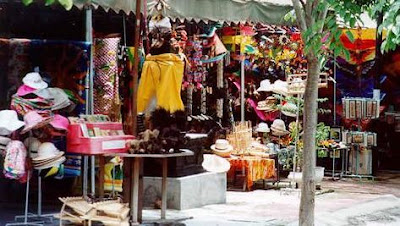One day before Nyepi ( Silent day ) is Ngrupuk Day, at that time there will be a lot of Ogoh ogoh ( giant monster effigies) around all street in Bali.
To welcome Nyepi Day ( Silent day ) on March 12th, 2013 , almost each village or district made Ogoh Ogoh. They will be parade them after the ceremony " Mecaru " and make offerings / trats to the Bhuta Kala to return to the place each home and don't interfere with people's lives.
Actually parade ogoh-ogoh is the appreciation of a work of art that is not mandatory. At first when pe-ngrupukan day Balinese Hindus, just by carrying the torch from bamboo with kerosene or prakpak ( the d palm leaves that have been dried ) and then burned, when sandikala ( dusk ) arrived after sunset with friends from the neighborhood, equipped with sounds such as drums , tin cans, kitchen utensils, just whatever it is that makes noises / noise, bring onion-rubbing, rubbing at the corners of the house and temple / corrected and spread rice tawur, after new home to the streets, joined by residents other.
Derived from the torch relay seems people began to develop their creativity and there ogoh-ogoh are today. Ogoh-ogoh is a symbol rather than bhuta kala, which is often symbolized by a hideous face, as rangda celuluk, the story of an evil puppet, and a lot of symbol ogoh-ogoh that appear are like social critique, and other forms of unique. For the tourist areas as the parade lasted a matter of interesting spectacle for tourists, as well as by local residents. However the implementation of the ceremony or Mabuu-buu in Ngerupuk in order not to deviate from the true meaning. It seems like if at the time of the day you plan to travel tour filled holiday in Bali, journey through password controlled so that when (after sunset), because some streets will be closed.









